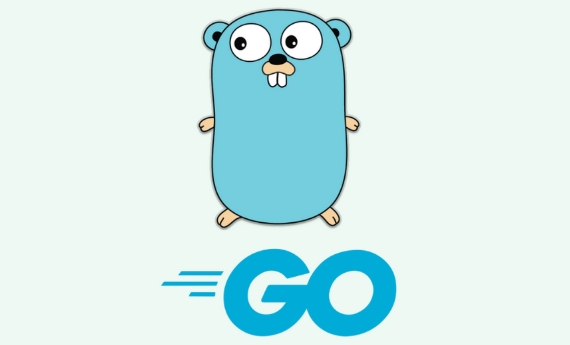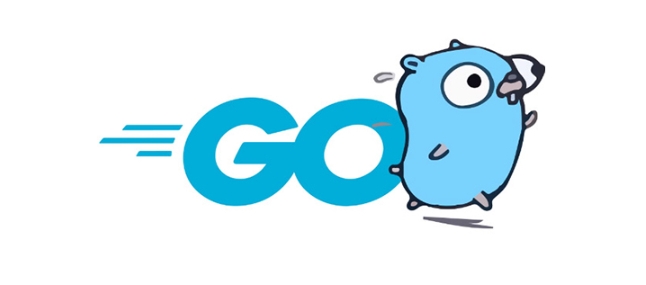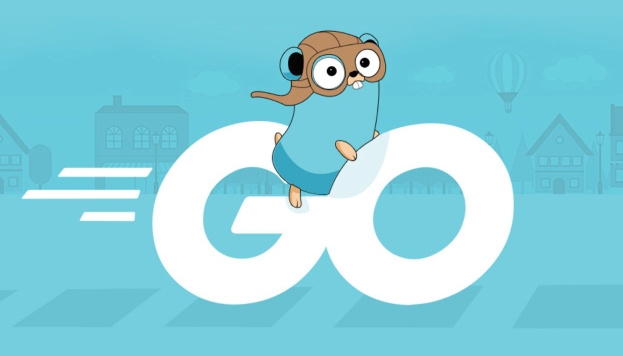Go handles concurrency through goroutines and channels, enabling simple, safe, and scalable concurrent programming. 1. Goroutines are lightweight threads managed by the Go runtime, started with the go keyword, and require minimal resources due to small, growable stacks. 2. Channels facilitate communication between goroutines, preventing race conditions by promoting message passing over shared memory, with unbuffered channels synchronizing sends and receives, and buffered channels allowing limited asynchronous communication. 3. The select statement enables multiplexing across multiple channel operations, supporting non-blocking and responsive designs. 4. Real-world patterns like worker pools use channels to distribute and collect tasks efficiently across concurrent goroutines. 5. The Go scheduler uses an M:N model to map goroutines to OS threads, employing work-stealing and preemption for load balancing and fairness, running by default on GOMAXPROCS CPU cores. Together, these features allow Go to simplify concurrent programming while ensuring efficiency and maintainability.

Go handles concurrency through goroutines and channels, making it simple and efficient to write concurrent programs.

Goroutines: Lightweight Threads
A goroutine is a function that runs concurrently with other functions. It’s like a lightweight thread managed by the Go runtime, not the operating system. You start one with the go keyword:
go doSomething() // runs concurrently
Compared to OS threads, goroutines are much cheaper:

- Start with a small stack (a few KB) that grows as needed.
- Managed by Go’s runtime scheduler, which multiplexes goroutines onto a small number of OS threads.
- No manual thread management—developers don’t worry about creating or destroying threads.
This allows you to run thousands or even millions of goroutines efficiently.
Channels: Communication Between Goroutines
Goroutines don’t share memory directly. Instead, Go promotes the idea:

"Do not communicate by sharing memory; share memory by communicating."
Channels are the primary way to communicate between goroutines. They are typed conduits through which you can send and receive values:
ch := make(chan int)
go func() {
ch <- 42 // send
}()
value := <-ch // receiveChannels help coordinate goroutines and avoid race conditions. There are two types:
- Unbuffered channels: Synchronize sender and receiver (both must be ready).
- Buffered channels: Allow some asynchronous communication (up to buffer size).
Select Statement: Multiplexing Channels
The select statement lets a goroutine wait on multiple channel operations:
select {
case msg1 := <-ch1:
fmt.Println("Received", msg1)
case ch2 <- "hi":
fmt.Println("Sent to ch2")
default:
fmt.Println("No communication")
}It’s like a switch for channels and is key for building responsive, non-blocking systems.
Real-World Example: Worker Pool
jobs := make(chan int, 100)
results := make(chan int, 100)
// Start workers
for w := 0; w < 3; w {
go func() {
for job := range jobs {
results <- job * 2
}
}()
}
// Send jobs
for j := 0; j < 5; j {
jobs <- j
}
close(jobs)
// Collect results
for a := 0; a < 5; a {
<-results
}This pattern is common in concurrent processing—like handling web requests or background tasks.
Under the Hood: The Go Scheduler
Go uses an M:N scheduler that maps M goroutines onto N OS threads. With features like:
- Work-stealing: Balances load across processor cores.
- Preemption: Prevents one goroutine from starving others.
- Runs on
GOMAXPROCS(by default, number of CPU cores).
You don’t need to tune this for most apps—it just works well out of the box.
Basically, Go makes concurrency simple, safe, and scalable by combining lightweight goroutines, channel-based communication, and a smart runtime scheduler. It’s not just about doing things in parallel—it’s about writing clean, maintainable concurrent code.
The above is the detailed content of How does Go handle concurrency?. For more information, please follow other related articles on the PHP Chinese website!

Hot AI Tools

Undress AI Tool
Undress images for free

Undresser.AI Undress
AI-powered app for creating realistic nude photos

AI Clothes Remover
Online AI tool for removing clothes from photos.

Clothoff.io
AI clothes remover

Video Face Swap
Swap faces in any video effortlessly with our completely free AI face swap tool!

Hot Article

Hot Tools

Notepad++7.3.1
Easy-to-use and free code editor

SublimeText3 Chinese version
Chinese version, very easy to use

Zend Studio 13.0.1
Powerful PHP integrated development environment

Dreamweaver CS6
Visual web development tools

SublimeText3 Mac version
God-level code editing software (SublimeText3)

Hot Topics
 Building High-Performance Microservices with Go
Jul 25, 2025 am 04:32 AM
Building High-Performance Microservices with Go
Jul 25, 2025 am 04:32 AM
UselightweightrouterslikeChiforefficientHTTPhandlingwithbuilt-inmiddlewareandcontextsupport.2.Leveragegoroutinesandchannelsforconcurrency,alwaysmanagingthemwithcontext.Contexttopreventleaks.3.OptimizeservicecommunicationbyusinggRPCwithProtocolBuffers
 Building and Deploying Go Applications with Docker
Jul 25, 2025 am 04:33 AM
Building and Deploying Go Applications with Docker
Jul 25, 2025 am 04:33 AM
Usemulti-stageDockerbuildstocreatesmall,secureimagesbycompilingtheGobinaryinabuilderstageandcopyingittoaminimalruntimeimagelikeAlpineLinux,reducingsizeandattacksurface.2.Optimizebuildperformancebycopyinggo.modandgo.sumfirsttoleverageDockerlayercachin
 Using Project Loom for Lightweight Concurrency in Java
Jul 26, 2025 am 06:41 AM
Using Project Loom for Lightweight Concurrency in Java
Jul 26, 2025 am 06:41 AM
ProjectLoomintroducesvirtualthreadstosolveJava’sconcurrencylimitationsbyenablinglightweight,scalablethreading.1.VirtualthreadsareJVM-managed,low-footprintthreadsthatallowmillionsofconcurrentthreadswithminimalOSresources.2.Theysimplifyhigh-concurrency
 Integrating Go with Kafka for Streaming Data
Jul 26, 2025 am 08:17 AM
Integrating Go with Kafka for Streaming Data
Jul 26, 2025 am 08:17 AM
Go and Kafka integration is an effective solution to build high-performance real-time data systems. The appropriate client library should be selected according to needs: 1. Priority is given to kafka-go to obtain simple Go-style APIs and good context support, suitable for rapid development; 2. Select Sarama when fine control or advanced functions are required; 3. When implementing producers, you need to configure the correct Broker address, theme and load balancing strategy, and manage timeouts and closings through context; 4. Consumers should use consumer groups to achieve scalability and fault tolerance, automatically submit offsets and use concurrent processing reasonably; 5. Use JSON, Avro or Protobuf for serialization, and it is recommended to combine SchemaRegistr
 A Guide to Go's Templating Engine
Jul 26, 2025 am 08:25 AM
A Guide to Go's Templating Engine
Jul 26, 2025 am 08:25 AM
Go's template engine provides powerful dynamic content generation capabilities through text/template and html/template packages, where html/template has automatic escape function to prevent XSS attacks, so it should be used first when generating HTML. 1. Use {{}} syntax to insert variables, conditional judgments and loops, such as {{.FieldName}} to access structure fields, {{if}} and {{range}} to implement logical control. 2. The template supports Go data structures such as struct, slice and map, and the dot in the range represents the current iterative element. 3. The named template can be defined through define and reused with the template directive. 4.ht
 How to pass a slice to a function in Go?
Jul 26, 2025 am 07:29 AM
How to pass a slice to a function in Go?
Jul 26, 2025 am 07:29 AM
When passing slices in Go, it is usually passed directly by value, because the slice header contains a pointer to the underlying array, and copying the slice header will not copy the underlying data, so the modification of elements in the function will affect the original slice; 1. If you need to reassign or adjust the slice length within the function and make the change take effect, you should pass the slice pointer; 2. Otherwise, you can pass the slice directly without using a pointer; 3. If reallocation may be triggered when using append, you must pass through the pointer to make the updated slice visible to the outside. Therefore, unless the entire slice is to be replaced, the slice should be passed in the form of a value.
 what does go vet do
Jul 26, 2025 am 08:52 AM
what does go vet do
Jul 26, 2025 am 08:52 AM
govetcatchescommonlogicalerrorsandsuspiciousconstructsinGocodesuchas1)misuseofprintf-stylefunctionswithincorrectarguments,2)unkeyedstructliteralsthatmayleadtoincorrectfieldassignments,3)sendingtoclosedchannelswhichcausespanics,4)ineffectiveassignment
 how to handle signals go by example
Jul 25, 2025 am 04:36 AM
how to handle signals go by example
Jul 25, 2025 am 04:36 AM
Use signal.Notify() in the os/signal package to register the specified signal (such as SIGINT, SIGTERM) into the buffer channel, so that the program can be captured instead of terminated by default; 2.






